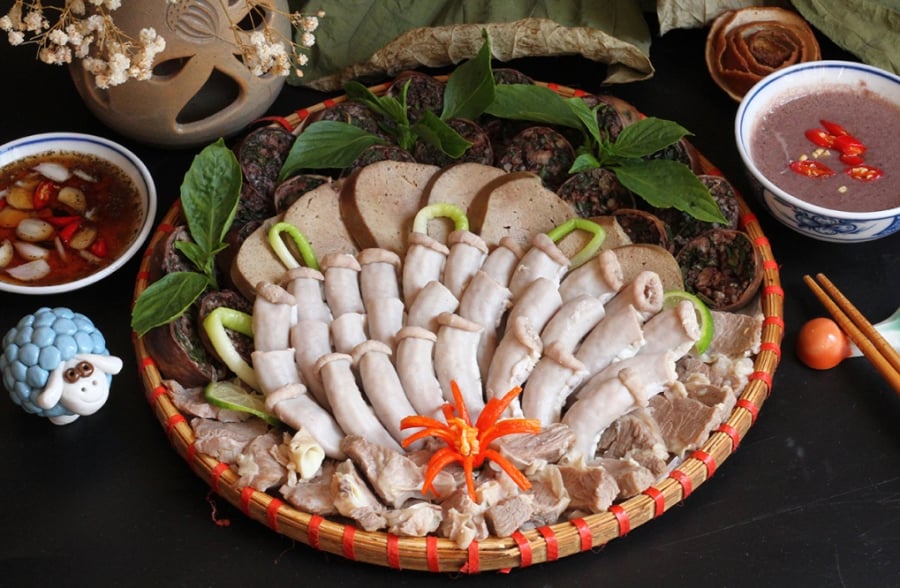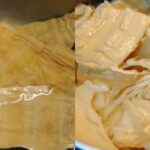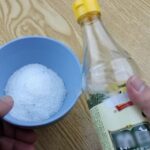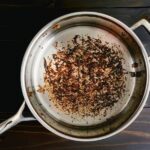Discover the secrets below to master the art of preparing delicious pork offal for your family to enjoy.
Selecting the Best Offal
To acquire the freshest and most delectable offal, it’s imperative to source it from a reputable and reliable supplier.
Pork offal, especially the large, thin, and bitter ends, tends to be tough and bitter. The bitter parts often exhibit a darker hue and contain streaks of blood. For a superior experience, opt for the thinner, smaller end, ensuring the intestines are plump, round, and display a pinkish-white color, with clear, milky fluids inside.

Choose the thinner, smaller end, ensuring the intestines are plump and round.
Cleaning the Offal
For regular pork offal, there’s no need to rub it with salt, ginger, lemon, or alcohol. Simply turn the intestines inside out, remove the fat, and use a mixture of flour and a pinch of salt to scrub them thoroughly. Then, rinse under running water. Afterward, scrub the offal with lemon to eliminate any remaining impurities, and finish with a final rinse.
This method ensures the offal is clean while maintaining its freshness and taste.
For pork intestines (small intestines), simply rinse them gently under running water to remove the inner fluids, or give them a light scrub before washing.
The Perfect Way to Boil Offal
Prepare a bowl of cold water with a few drops of lemon juice or some sour alum, bring it to a boil, and then let it cool.
The key to delicious offal is to add it to already boiling water. This ensures the offal is cooked just right and has a delightful crunch.
Add a bit of ginger to enhance the aroma.
Maintain a rolling boil for 2-3 minutes, or until the offal turns pink, then remove it from the heat and soak it in the prepared cold lemon water. This process ensures the offal remains crisp and acquires a beautiful white color, avoiding discoloration.
Typically, the total cooking time, from adding the offal to the boiling water to removing it, is around 7-10 minutes, depending on the quantity of offal being prepared.
For pork intestines, a brief boil of a few minutes is sufficient. Remove them from the heat, and immediately immerse them in a bowl of cold sour alum water with ice cubes to cool. Once cooled, remove them from the water and slice them to your desired thickness.

The Secret to Boiling Pork Offal: White, Crisp, and Bitter-Free
The most crucial aspect to achieve white, crisp offal is to boil it quickly and remove it from the heat as soon as it’s cooked. Leaving it in the water for too long will result in tough, chewy offal.
-
Select thicker small intestines, and gently squeeze to check for white fluids, indicating a lack of bitterness. Yellow fluids indicate bitterness.
-
Opting for double intestines will enhance the flavor, but you’ll need to shop early or place an advance order with your butcher.
-
Avoid over-scrubbing or cleaning too vigorously, as this can make the offal tough and dry.
-
If you prefer your offal hot, give it a quick dip in boiling water before serving. Some restaurants use ceramic bowls with a candle underneath to keep the offal warm.
-
Small intestines cook quickly, requiring only about 2.5-3 minutes of boiling time. After boiling, soak them in ice-cold water with lemon juice to halt the cooking process and enhance their crispness.
The Ultimate Guide to Preparing Dried Bamboo Shoots: Beyond Soaking, This Method Ensures Crisp Deliciousness and Removes Sulphur.
Măng is a versatile ingredient in Vietnamese cuisine, adding a unique flavor and texture to many dishes. However, it’s important to note that improper preparation can lead to the presence of toxins. With the right processing methods, măng can be a delicious and safe addition to your meals, offering a taste of traditional Vietnamese culture.






































